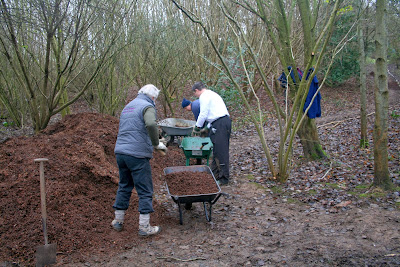Winding up through the trees from post 11, the path has now been given it's first dressing of woodchip.
We have had lots of positive feedback from walkers, especially dog-walkers, about how much easier it is to use the path now.
This, of course encourages the volunteers to keep up their good work.
We have improved the camber of the path well past post 9.
Perhaps we need a few more steps now leading up through the blackthorn towards post 8.
We can always use more volunteers.


































